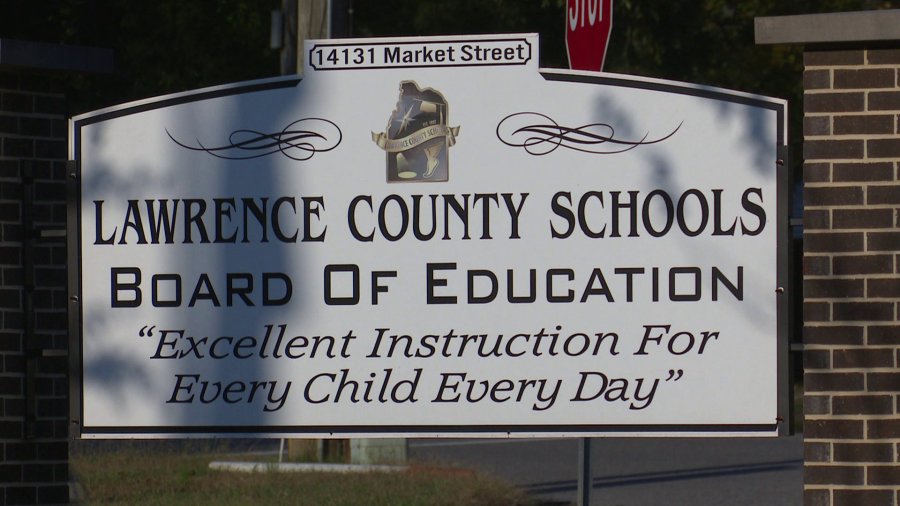The End Of A Desegregation Order: Analysis And Impact

Table of Contents
The Legal Context of Ending a Desegregation Order
Ending a desegregation order is a legally complex process, requiring careful consideration of various factors and adherence to specific procedures. This section will examine the legal framework surrounding the termination of desegregation orders.
Judicial Oversight and the Process of Termination
The termination of a desegregation order is overseen by the courts. The process typically involves:
- Court rulings: A federal court must determine that the school district or other entity subject to the order has achieved full compliance with its terms.
- Compliance reviews: Regular reviews and assessments are conducted to evaluate progress and identify any remaining barriers to desegregation. These often involve data analysis on student demographics, teacher assignments, and resource allocation.
- Department of Justice involvement: The Department of Justice often plays a crucial role in monitoring compliance and ensuring the fairness of the desegregation process. Their involvement can extend to litigation if necessary to enforce compliance.
Examples of cases illustrating the complexities of ending desegregation orders include Milliken v. Bradley (1974), which limited the scope of desegregation remedies, and subsequent cases that addressed issues of unitary status and the continued presence of racial disparities. The criteria for ending an order often include the elimination of de jure segregation, the achievement of racial balance in student populations (although this is not always the sole metric), and the demonstrable absence of discriminatory practices. Challenges to termination often arise when plaintiffs argue that re-segregation is occurring or that the school district hasn't adequately addressed the root causes of racial inequality.
The Role of Unitary Status Declarations
A key concept in the termination of desegregation orders is "unitary status." This declaration signifies that a school district has eliminated all vestiges of state-sponsored segregation and has established a system free from racial discrimination.
- Definition of unitary status: A school district is deemed to have achieved unitary status when it demonstrates that it has eradicated the lingering effects of past discriminatory practices and is operating a system free of racial discrimination.
- The process of achieving unitary status: This involves implementing various measures, including racial balancing (though not always mandated), equitable resource allocation, and addressing discriminatory practices in hiring, assignment of teachers, and disciplinary procedures.
- Challenges in proving unitary status: Demonstrating unitary status can be challenging, particularly in cases where historical segregation has resulted in deeply ingrained patterns of residential segregation and racial inequality. This often requires substantial evidence and ongoing monitoring to ensure that the achieved status is maintained.
Social and Educational Impacts of Desegregation Order Termination
The termination of a desegregation order, even if legally sound, can have significant social and educational consequences, often leading to unintended and negative outcomes.
Re-segregation and its Manifestations
The lifting of a desegregation order can create conditions that lead to re-segregation. This isn't always overt; it can manifest in subtle ways:
- Examples of re-segregation: Residential patterns often play a significant role. Housing segregation can lead to school segregation, even without explicitly discriminatory school policies. This can also manifest in tracking systems within schools, leading to disproportionate representation of minority students in lower-level courses.
- Statistical data on racial disparities after order termination: Numerous studies have shown a correlation between the termination of desegregation orders and increases in racial disparities in school achievement, resource allocation, and disciplinary practices.
Impact on Educational Achievement and Opportunities
The consequences of ending desegregation orders on educational outcomes can be profound, particularly for minority students:
- Studies on the long-term effects of desegregation on academic performance: Research has consistently shown that desegregation, when properly implemented, can lead to improved educational outcomes for minority students. Conversely, the lifting of these orders can lead to a widening of achievement gaps.
- Access to advanced courses and college preparedness: The end of desegregation orders can impact access to advanced courses, extracurricular activities, and college preparatory programs, further disadvantaging minority students.
The Community's Perspective: Voices and Experiences
Understanding the impact of ending a desegregation order necessitates considering the experiences of individuals and communities directly affected.
- Quotes and anecdotes illustrating diverse perspectives: Collecting oral histories and conducting interviews can provide valuable insights into the lived experiences of those affected, revealing the complexities and nuances of this issue.
- Focus groups and interviews on lived experiences: These methods allow for capturing a range of perspectives, including those who viewed the termination positively and those who experienced negative consequences.
Long-Term Effects and Policy Implications
The long-term effects of ending a desegregation order extend beyond immediate social and educational outcomes and have profound policy implications.
Addressing Systemic Inequality
Even after desegregation orders are lifted, systemic inequality persists. Addressing this requires comprehensive strategies:
- Strategies for addressing systemic racism and inequality: These may include targeted investments in underserved schools, efforts to address housing segregation, and initiatives promoting diversity and inclusion.
- Policy recommendations for promoting equitable outcomes: Policies aimed at creating equitable access to resources, addressing achievement gaps, and fostering truly integrated communities are essential.
Lessons Learned and Future Considerations
Analyzing past experiences with desegregation orders provides valuable lessons:
- Key takeaways from case studies: Careful analysis of successful and unsuccessful desegregation efforts can inform future policies and practices.
- Recommendations for future approaches to desegregation and integration: Focusing on addressing the root causes of segregation and inequality, rather than solely on achieving numerical balance, is crucial.
Conclusion
The end of a desegregation order is a complex event with far-reaching consequences. While it may signify the formal completion of a legal process, the social and educational impacts can persist for generations. Understanding the legal context, social implications, and long-term effects is crucial for effectively addressing systemic inequality and promoting equitable outcomes in education and beyond. By analyzing past experiences with desegregation order termination, we can better prepare for future challenges and work towards creating truly integrated and equitable communities. Further research into the impact of specific desegregation orders is crucial to fully grasp the complexities of this issue and to develop effective strategies for preventing future re-segregation and ensuring equal opportunity for all. Continued vigilance and proactive policies are needed to prevent the resurgence of segregation and ensure that all students have equal access to a quality education, regardless of race. The legacy of desegregation orders and their impact must guide us toward a more just and equitable future.

Featured Posts
-
 Tulsa Day Center Urgently Needs Warm Clothing Donations For Winter
May 02, 2025
Tulsa Day Center Urgently Needs Warm Clothing Donations For Winter
May 02, 2025 -
 Coliceva Prva Ljubav I Pjesma Kad Sam Se Vratio Potpuna Prica
May 02, 2025
Coliceva Prva Ljubav I Pjesma Kad Sam Se Vratio Potpuna Prica
May 02, 2025 -
 Italy Vs France Duponts Stellar Performance Secures French Victory
May 02, 2025
Italy Vs France Duponts Stellar Performance Secures French Victory
May 02, 2025 -
 Harry Potter Franchise Exploring The Directorial Change For Prisoner Of Azkaban
May 02, 2025
Harry Potter Franchise Exploring The Directorial Change For Prisoner Of Azkaban
May 02, 2025 -
 International Harry Potter Day Find The Perfect Fan Merchandise Online
May 02, 2025
International Harry Potter Day Find The Perfect Fan Merchandise Online
May 02, 2025
